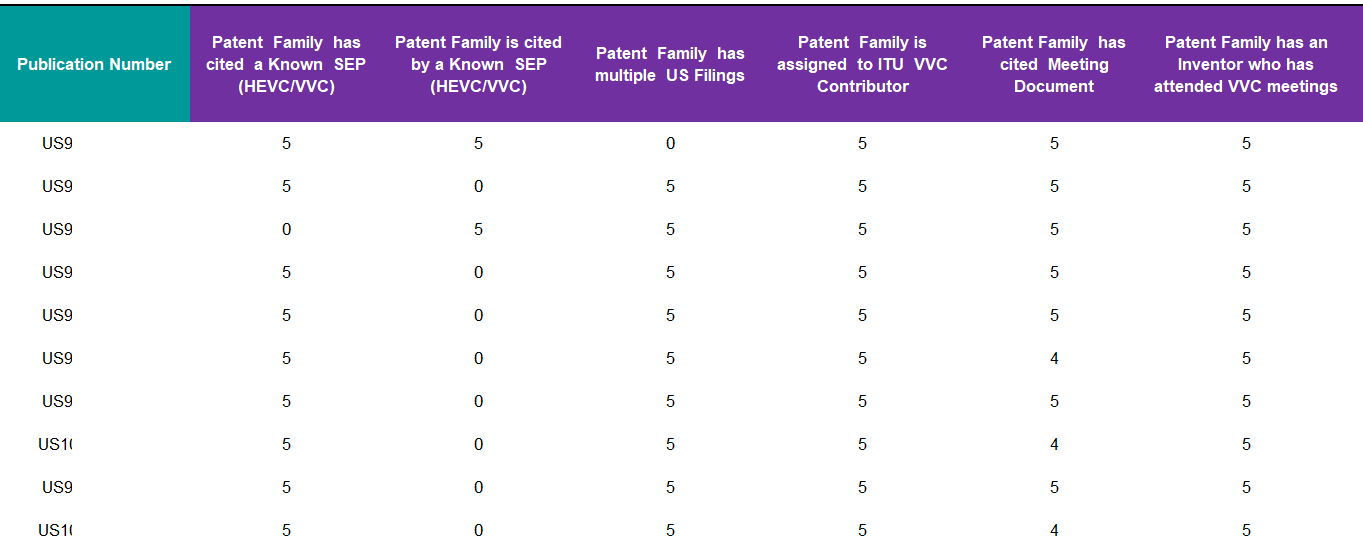Identifying Standard Essential Patents not only helps leverage IP rights effectively but also invests in acquiring the right set of patents. Traditional methods of ranking Standard Essential Patents (SEPs) often rely on purely objective parameters like the number of citations, claim length, and time to grant. For instance, focusing on citation count alone may result in overestimating the importance of less relevant patents while overlooking truly essential patents that could significantly strengthen a patent portfolio.
This article will outline a refined approach to SEP ranking. It will focus on a more tailored methodology that takes into account specific parameters relevant to the technology domain, ultimately improving the accuracy of identifying high-potential SEPs.
Key Parameters for Identifying Potential SEPs:
1. Check for Citations to Known SEPs:
- Backward Citations: Start by analyzing whether the patent family cites any known SEPs. If a patent cites an already established SEP, it indicates that the patent builds upon foundational work related to the standard. This relationship strengthens the likelihood that the patent in question could also be essential to the same or a similar standard.
- Forward Citations: Evaluate whether the patent family has been cited by known SEPs. If a standard-essential patent references another patent, it suggests that the latter might have influenced the development of the standard itself. This influence increases the probability that the cited patent holds significance as a potential SEP.
2. Review Non-Patent Literature (NPL) Citations:
Non-patent literature, particularly documents from standard-setting bodies, can provide valuable insights for identifying SEPs. Here’s how to effectively use NPL citations:
- Standard Body Documents (e.g., Change Requests): Pay particular attention to patents citing meeting minutes, working group documents, or change requests from standard bodies such as 3GPP for telecommunications or JVET for video codecs like HEVC or VVC. Such references suggest the patent may have been directly discussed or influenced during the development of the standard, increasing its likelihood of being an SEP.
- Standards: Patents that cite a standard have a higher chance of being an SEP. This is because the patent is likely building on the standard or suggesting a modification to the standard process. However, this parameter may be given less weight because there could be a large number of patents that directly cite the standards.
3. Cross-Reference Inventors’ Involvement in Standards Development:
The involvement of inventors in standard-setting activities can be a strong indicator of the patent’s essentiality. To cross-reference inventors effectively:
- List of Attendees at Standards Meetings: Obtain lists of individuals who regularly attend the meetings of standard bodies related to the technology domain in question. For instance, attendees at 3GPP meetings for telecommunications or JVET meetings for video standards are key stakeholders in setting these standards.
- Cross-Check Inventors: Verify if the inventors listed on the patents in your portfolio are also regular attendees of these meetings. If an inventor of a patent is involved in the standard-setting process, it significantly increases the likelihood that the patent they are associated with could be an SEP. This is because the inventor’s direct input into the standard development process suggests the patent may align with the evolution of the standard itself.
Example of SEP Patent Ranking Using Key Parameters
To provide a clear understanding of how the SEP ranking process works, we applied the outlined parameters to a set of patents and assigned a score based on whether they meet specific criteria. In this case, patents were scored on a scale of 1 to 5, with a score of 5 indicating the highest likelihood of being a Standard Essential Patent (SEP). Eventually, the sum of scores for each parameter was taken to rank the patents.
Below is a snapshot of the ranking process, where patents were evaluated based on the above parameters:

As shown in the table, patents that meet these criteria are assigned a score of 5 for each relevant parameter. This method allows a clearer decision with regard to SEP identification, ensuring that patents with only the highest strategic value are acquired.
Conclusion
Acquiring patents that are not truly essential will result in overvalued investments with little to no ROI, weakening the competitive edge in the long run.
However, by following a refined SEP identification process, you will avoid these pitfalls and ensure that you invest in patents that provide true value, strengthen market position, and deliver a solid return on investment.
Fill out the form to connect with SEP experts and ensure accurate patent evaluation without missing crucial SEP insights. Gain valuable time to focus on tasks that matter while meeting deadlines effectively.
Authored by: Aadesh Srivastava










